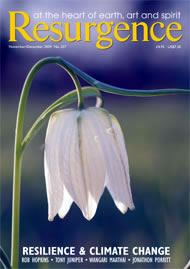Pre-dating the evolution of deciduous plants, the conifers of the northern hemisphere have survived ice ages and the movement of continents to populate latitudes extending beyond the Arctic Circle down to the Equator, and while there are many conifer species, the pine tree stands out as beautiful, enduring and adaptable, its utility indispensable to human culture.
The UK’s native pine, Pinus sylvestris, also known as the Scots Pine, is found in Northern Europe from Ireland and Portugal in the west, to Lapland in northern Scandinavia, into Asia in eastern Siberia, and south to the Caucasus where it grows at altitudes above 1,200 metres. It prefers a dry soil, stands wind and sea spray and is most useful in shelter belts when establishing a garden. Native forests have all but disappeared from the UK due to over-exploitation and deer-browsing, though pines still mark old drovers’ routes and estate boundaries, and naturalisations have taken place on heaths and moors. The Caledonian Forest is being actively restored in the highlands of Scotland thanks to the enlightened work of the organisation Trees for Life.
Given ideal conditions, the pine can live up to 600 years and attain a height of sixty metres, while specimens grown in the Arctic Circle have been found with upwards of 600 rings and scarcely measuring twenty centimetres in diameter. Tree rings record poor summers in a thin ring, and better summers in a more substantial deposit of wood, holding a history of climate analogous to an Antarctic ice-core, demonstrating the pine’s ability to grow in a very wide range of conditions and its qualities of resilience and adaptability.
Part of the pine’s endurance lies in its needles, which stand up to extremes of weather better than the broad leaves of deciduous trees, mere striplings in the history of plant life. The mature pine grows to form a tall tree with a relatively unbranched trunk; while it is easily cut and worked, it contains a high resin content, acting as a preservative and giving the timber long life. Pine became the first choice of house- and ship-builders and furniture- and paper-makers, whose needs rapidly outstripped native stands as industrialisation took hold in Western Europe. Baltic timber underwrote the construction of London’s Underground and the Paris Métro, not to mention all the floors laid in the apartment buildings and grander houses of our cities.
Southern Europe enjoys more varied populations of pines, including the picturesque Umbrella Pine, Pinus pinea, which grows in dry maritime areas of the Mediterranean. Pinus pinaster, the Maritime Pine, has a similar distribution. One of the species from which turpentine is derived, it furnished the painter Cézanne with inspirational landscapes as well as the actual material of his craft. Without turpentine there might be no Western pictorial tradition, since turpentine and resin-based varnishes have made and preserved paintings for a thousand years. Cézanne saw the pine tree as a battered old man, alone but undiminished, and he cherished its shade and the drama recorded in its form.
The pines of Eastern Asia have inspired artists and poets for centuries. A mountain pine perched on a rocky outcrop has been a favourite subject for calligraphers, whose practised, minimal gestures evoke the spirit of endurance.
Growing native pine trees can help regenerate degraded ecosystems, as they provide fast growth rates, soil stability, improved water retention, natural habitat and carbon sequestration potential, as well as all the bounty of the wood for fuel, furniture and building materials. And whilst native pines are best for this purpose, over the centuries many wonderful species from other continents have been introduced that have integrated into our landscapes. Perhaps the most extraordinary is the ginkgo, a cousin to the pine and classed as a living fossil, since, though it has only been found growing wild in Eastern China, fossilised remnants have been found throughout the world. It grows readily as a cultivated tree, even in cities alongside traffic-filled roads. A marvellous specimen some 200 years old grows in the botanical gardens in Bath, where the short-lived autumn yellow of its leaves is breathtaking.
Pinus gerardiana, the Chilgoza Pine, from the north-western Himalayas, and Pinus bungeana from China, known as the Lacebark Pine, have ornamental bark. Other pines growing in extreme conditions have generated dwarf forms, such as Pinus pumila, the Siberian Dwarf Pine.
North America contains the greatest number of distinct species, while the many Asian pines have adapted to Siberian winters and to the Sumatran rainforests at 2º S, demonstrating the valuable potential of pine trees to adapt to climate change. The botanical gardens in Cambridge hold a collection of pines, including Pinus nigra, the European Black Pine, and subspecies from Austria and Eastern Europe. Planted before 1850, these trees have matured into broad-girthed specimens, despite the chalky subsoil of the site and perhaps because of the relatively dry climate of East Anglia.
Pines have been planted to stabilise the advance of sand dunes; the Monterey Pine, Pinus radiata, is especially adapted to sea winds in milder climates, although it can be invasive under certain conditions. Some pines give delicious nuts, maturing on the tree for up to three years, waiting for the perfect moment of release. Pinus pinea is our best producer of pine nuts, while several North American species yield edible seeds, including the unusual Pinus monophylla, the Single-leaf Pinyon, which bears its needles singly.
Although my own garden is low-lying and damp and not ideal for pines, a stand was planted forty years ago on the highest part of the ground around the house, and these have been inhabited by rooks in noisy springtime courtship. I have planted Pinus wallichiana, the Bhutan Pine, its elegant, long, blue-green needles borne in bundles of five, in some poor, stony soil, and after twenty years it is some thirty feet high, gleaming in our wet summers.
In this issue of Resurgence many of the contributors have extolled the virtues of trees and have exhorted us to plant as many of them as we can to help mitigate climate change. For its sheer beauty, incredible rate of growth and adaptability to most conditions I would recommend the humble pine tree.








